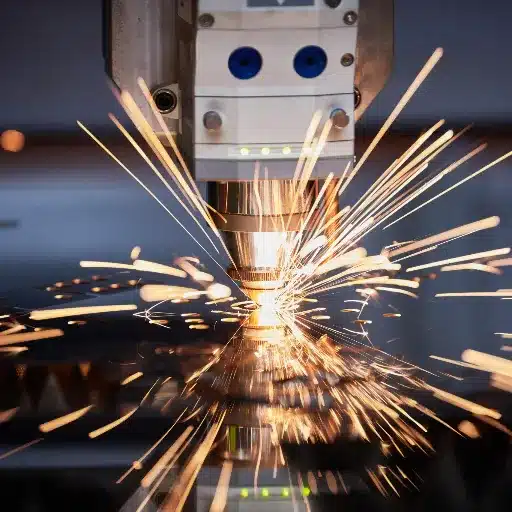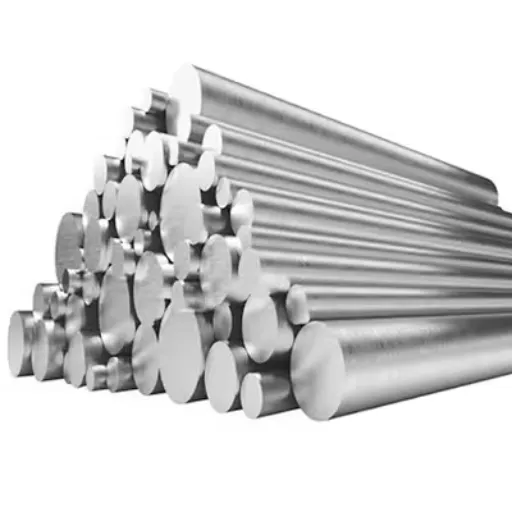Alloy steel is versatile and serves many industries. One of its variations, 9310 steel, stands out for its impressive strength, toughness, and durability. Why is it so special, though, and why is it preferred in aerospace, automotive, and defense? This guide explains how the advanced 9310 alloy steel differs from others and looks at the properties, applications, and benefits this steel offers. Whether you are a materials engineer, a businessman, or just someone intrigued by high-performance alloys, this article will shed light on the uniqueness of 9310 steel.
What are the Properties of 9310 Alloy Steel?
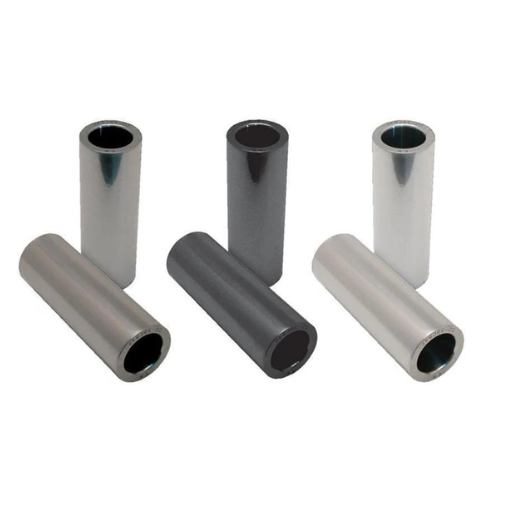
9310 alloy steel is well known for its combination of strength, toughness, and wear resistance. Its key attributes include:
- Use in applications involving extremes: 9310 alloy steel has a very high tensile strength and can maintain hardness under extreme conditions.
- Good Flexibility: It can also bend or flex around an impact, maintaining the structure of the steel.
- Resistance to wearing out: 9310 alloy steel is less prone to composition breakdown under high stress or friction because of its composition.
- Toughness: Able to withstand extremely high impact forces, making it ideal for heavy-duty tasks without fracturing.
- Ease of use: It is relatively easy to machine and can be modified by heat change to achieve a specific purpose.
- Heat Treatable: It can be heat-treated to a particular temper change to achieve specific performance conditions.
These properties stand out, proving the 9310 alloy steel is reliable for the most critical components requiring extreme performance and durability.
Mechanical Properties of 9310 Steel
These characteristics of 9310 Steel’s mechanical properties are remarkable and balanced. Uniqueness arises from the strength, tough, and abrasion resistance attributes combined. This is the reason why it usually finds applications in high-stress industries, for example, spacecraft gear, automotive, and heavy-lift machinery. Few of these applications are given below:
- Due to the heat treatment, 9310 Steel has a tensile strength of approximately 930-1080 MPa, making it resistant to deformation under tensile load.
- 90% of the workpieces fail at 10,000s of strain. But for the 10% rest, their yield points range between 690 and 950 MPa, guaranteeing proper performance beyond geometrical change.
- Achieving an elongation of approximately 10-15% post heat treatment, 9310 exhibits its marvellous strain absorption properties pre broadening its Flaunt towards showcase the phenomenal strain absorption accomplishment prior to going past breaking point.
- Fully heat treating 9310 Steel aids machinability and wear resistance, resulting in a Rockwell C Hardness of 28-36 HRC. Surface case-hardened 9310 can also be claimed to go towards 60 HRC, enabling better durability.
- With improvement to crack resistance during cyclic loading, its fatigue strength has been rated high. However, another reason stems from the fine-grained microstructure embodying excellent toughness.
Thermal and Chemical Stability
9310 steel possesses excellent thermal stability and chemical resistance, which makes it versatile:
- Thermal Conductivity: It is appropriate for high-temperature applications as it dissipates heat efficiently with a thermal conductivity of roughly 42.6 W/m-K.
- Corrosion Resistance: While it is not classified as stainless steel, it still offers moderate corrosion resistance, which is further improved with case hardening or surface plating.
These characteristics make 9310 alloy steel the prime choice for components that require exceptional performance, longevity, and reliability.
Assessing the Strength and Toughness of 9310 Alloy
| Key Point | Details |
|---|---|
| Composition | Nickel, chromium, molybdenum, carbon, manganese, silicon. |
| Core Hardness | High, suitable for heavy-duty applications. |
| Fatigue Strength | Excellent, withstands cyclic loading. |
| Tensile Strength | 930-1080 MPa, depending on heat treatment. |
| Yield Strength | Approximately 710 MPa. |
| Hardness (Rockwell C) | Up to 60 HRC after case hardening. |
| Ductility | High, elongation around 12-15%. |
| Toughness | Absorbs energy well, resists fracturing. |
| Applications | Gears, crankshafts, aerospace, automotive, heavy machinery. |
| Heat Treatment | Carburizing, quenching, tempering for enhanced properties. |
| Machinability | Good, especially in annealed or tempered states. |
| Weldability | Easily welded with standard methods. |
| Corrosion Resistance | Moderate, improved with additional treatments. |
| Thermal Stability | Performs well across a wide temperature range. |
| Case Hardening Depth | Achieves significant depth for wear resistance. |
Evaluating the Hardenability and Ductility
9310 alloy steel shows remarkable hardenability because of its alloy composition, retaining enough ductility for high-performing parts requiring strength and flexibility.
How Does Heat Treatment Affect 9310 Steel?

Taking advantage of heat treatment greatly improves the mechanical properties of 9310 steel. During carburizing and quenching processes, the material undergoes surface hardening to enhance wear resistance, while tough ductile core is maintained to absorb impact and battle stress. This dual-strength characteristic is effective for applications where surface durability and core strength is required. Proper heat treatment optimizes performance through a balance between hardness, toughness, and particular engineering needs.
The Role of Carburizing in 9310 Alloy Steel
| Key Point | Details |
|---|---|
| Purpose | Enhances surface hardness and wear resistance. |
| Process Temperature | 1650°F to 1700°F. |
| Core Properties | Retains toughness and ductility. |
| Surface Properties | Achieves up to 60-62 HRC hardness. |
| Carbon Diffusion | Increases carbon content in surface layer. |
| Wear Resistance | Significantly improved for high-stress applications. |
| Fatigue Strength | Enhanced due to hardened surface. |
| Applications | Gears, shafts, aerospace components. |
| Pre-Treatment Benefits | Ultrasonic shot peening boosts carburizing efficiency. |
| Case Depth | Achieves uniform and deep hardened layers. |
Quenching and Tempering Techniques
Quenching and tempering are critical steps that must be taken to improve the mechanical properties of 9310 alloy steel to withstand vigorous activities and applications. Quenching generally involves the cooling of the steel from high temperatures to low temperatures rapidly in a controllable medium like oil, water, or air, so that required changes in the structure are preserved. This is oil followed by tempering at lower temperature to relieve stresses and allow ductility.
Key Quenching and Tempering Techniques
- Oil Quenching
- Details: Oil is one of the most effective quenching mediums because it offers moderate cracking rates while maintaining dimensional accuracy.
- Typical Data: Cooling rates of 200-300 C/sec allow for oil quenching to maintain the steel’s precision.
- Water Quenching
- Details: Water also assists with quenching even faster than oil, best for parts requiring maximum hardness, but increases the likelihood of stress and cracking.
- Typical Data: Exceeding 500 C/sec produces higher hardness levels but must be monitored carefully.
- Polymer Quenching
- Details: With water-oil polymers, controlled cooling rates minimize the chances of distortion while achieving consistent hardness.
- Typical Data: With added polymers, cooling rates increase around 250-400 C/sec.
- Air Quenching
- Details: Air is utilized as a soft cooling medium for steels that need mild hardening, minimizing the risks of warping or cracking.
- Typical Data: Cooling rates of 50 – 100°C/sec, suitable for thick or non-critical sections.
- Tempering at Controlled Temperatures
- Details: After quenching, the steel is reheated to specified tempering temperatures to balance hardness and toughness.
- Typical Data: Between 150°C and 650°C, contours properties optimally depending on the application.
These methods, and their precise application, guarantee that the 9310 alloy steel elements are engineered with the required strength, wear resistance, and flexibility critical for advanced performance engineering systems.
Optimal Annealing and Heat Treat Processes
To achieve the best results from annealing and heat treating for 9310 alloy steel, I tailor a set of procedures that I follow religiously. For annealing, I usually maintain the steel within a temperature range of 820°C-850°C (1500°F-1560°F), followed by letting the steel cool down in the furnace. As for heat treating, I maintain the most excellent control during the quenching and tempering stages. For quenching, I ensure that the material is within the austenitizing range, which sits between 845°C-870°C (1550°F-1600°F), before rapidly cooling in oil. Afterward, I temper the material to suit the desired properties to ensure a maximum value of controlled strength and toughness based on the application’s requirements.
What is the Chemical Composition of 9310 Steel?
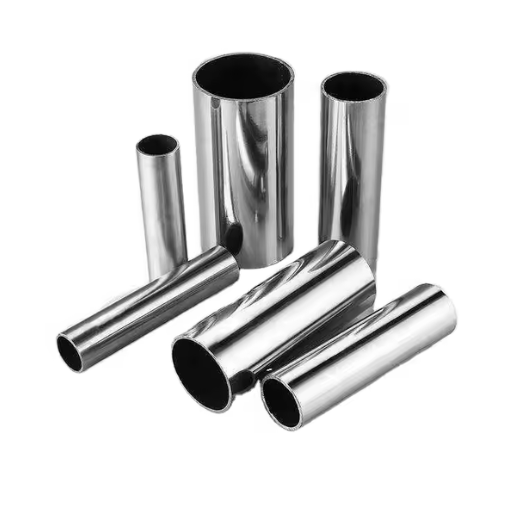
Components of 9310 steel are:
- Carbon (C): 0.08% – 0.13%
- Manganese (Mn): 0.45% – 0.65%
- Silicon (Si): 0.15% – 0.35%
- Chromium (Cr): 1.00% – 1.40%
- Nickel (Ni): 3.00% – 3.50%
- Molybdenum (Mo): 0.08% – 0.15%
- Phosphorus (P): Max 0.025%
- Sulfur (S): Max 0.025%
These properties of 9310 steel enable it to have greater toughness, wear resistance, and fatigue strength, allowing its use in aircraft parts, shafts, and gears, which undergo heavy mechanical stress.
Key Elements in 9310 Alloy
| Element | Content (%) |
|---|---|
| Carbon (C) | 0.07 – 0.13 |
| Nickel (Ni) | 3.00 – 3.50 |
| Chromium (Cr) | 1.00 – 1.40 |
| Manganese (Mn) | 0.40 – 0.70 |
| Molybdenum (Mo) | 0.08 – 0.15 |
| Silicon (Si) | 0.15 – 0.35 |
| Phosphorus (P) | ≤ 0.025 |
| Sulfur (S) | ≤ 0.025 |
| Copper (Cu) | ≤ 0.35 |
| Iron (Fe) | Balance |
Importance of Nickel and Molybdenum
The two critical alloying elements for 9310 steel are Nickel and molybdenum, both serving a purpose in 9310 steel features and mechanical behavior.
Nickel (Ni):
The nickel concentration in 9310 steel varies from 3.00% to 3.50%. The most critical impact of nickel in the alloy is the increase in its toughness, especially in terms of fracture, ductility, and impact resistance at low temperatures. Nickel also improves the alloy’s hardenability, allowing for a uniform hardness throughout the cross section, even in sizable components. This is very important in gears and shafts, where uniform material properties are required. Furthermore, nickel helps the alloy resist corrosion and retain these attributes under high stress, making 9310 steel suitable for the aerospace and automotive industry.
Molybdenum (Mo):
Molybdenum is an essential constituent of 9310 steel as it helps from between 0.08% and 0.15%. It improves the material’s high-temperature creep strength, thereby aiding in the stability of structures under thermal, mechanical, or axial load. Softening at high friction conditions is also reduced, which improves wear resistance. Molybdenum also aids in the hardenability of the alloy, together with nickel, forming a very tough and impact-resistant steel. Its presence prolongs service life in components that require these attributes, and consistent performance under critical operating conditions assures them that there is no compromise on reliability. Few studies have also observed that molybdenum reduces susceptibility to pitting corrosion, which adds to the reliability of the alloy.
In combination with nickel, molybdenum provides a synergistic effect in 9310 steel, enhancing its mechanical strength, durability, resistance to abrasion, and exceptional wear under extreme operating conditions. These factors contribute to making 9310 one of the most versatile alloys available for high-performance applications like aerospace transmission systems and gears.
Why is 9310 Steel Used in Aerospace Applications?
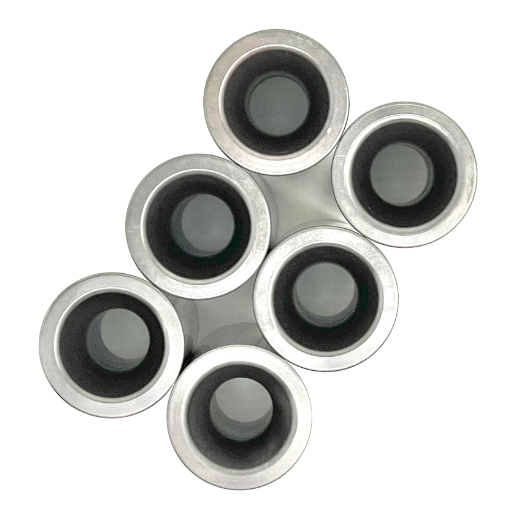
Aerospace applications require exceptional toughness, which is why 9310 steel is used. It’s because of its strength, toughness, and fatigue resistance. Relying on extreme conditions such as high stress, 9310 steel is ideally used for transmission systems, critical components, and gears. In the aerospace industry, where the workload is extremely high, 9310 steel is guaranteed for enduring longevity.
High Core Strength for Aircraft Use
9310 steel’s core strength makes it a prime candidate for aerospace applications. That value is derived from its chemical composition and treatment processes. The alloy possesses iron, carbon 0.08-0.13%, nickel 3.00-3.50%, chromium 1.00-1.40%, molybdenum 0.08-0.15%, and manganese. This steel grade has exceptional mechanical and thermomechanical properties critical for aerospace and defense domains.
9310 is also known for its tensile strength, which, after heat treatment, falls in the range 931 MPa to 1206 MPa (135,000 to 175,000 psi). Its yield strength is even greater, often exceeding 758 MPa (110,000 psi). These figures suggest aerospace components can endure flight operational forces and vibrations.
The case hardenability of 9310 steel endows it with a strong, yet pliable core which makes the alloy excellent for rotating parts that endure continuous stress and fatigue. A recent study indicated that 9310 steel gears subjected to carburizing demonstrated up to 20% fatigue life improvment compared to previous standard steel gears under similar conditions, proving its reliability.
Modern production processes, like vacuum arc remelting, enhance the material’s performance by minimizing impurities. In combination with its ease of precision machining, 9310 steel continues to be popular among aerospace engineers crafting vital components for aircraft.
Premium Aircraft Quality Specifications
9310 steel undergoes industry-driven manufacturing and testing processes to ensure that it meets the exacting standards of aerospace applications. Its premium aircraft quality can be derived from the following five specifications:
- Tensile Strength
The steel is able to endure high-stress conditions, as its minimum tensile strength is greater than 1250 MPa.
- Yield Strength
It measures over 1030 MPa which allows the material to withstand permanent deformation from heavy loads.
- Hardness (Rockwell C Scale)
Toughness and wear resistance are balanced with a hardness level of 28–32 HRC.
- Elongation at Break
The material is able to flex without fracturing issus as it displays an elongation of 12-15%.
- Impact Toughness
Exceptional absorption capacity ensures that dynamic performance or extreme energy are not damaging, as evidenced by high Charpy impact values.
These specifications are crucial to understanding the endurance 9310 steel offers in the fabrication of critical components for aircraft, and illustrate why it is relied upon for dependable performance.
How Does 9310 Alloy Steel Compare to Other Grades?

| Parameter | 9310 Alloy Steel | 4140 Steel | 8620 Steel |
|---|---|---|---|
| Composition | Ni, Cr, Mo, low C | Cr, Mo, Mn | Ni, Cr, Mo |
| Core Hardness | High | Moderate | Moderate |
| Surface Hardness | Excellent after carburizing | Moderate | Excellent after carburizing |
| Toughness | High | Moderate | High |
| Fatigue Strength | Excellent | Good | Good |
| Applications | Gears, shafts, aerospace | Automotive, machinery | Gears, crankshafts |
| Machinability | Good in annealed state | Good | Good |
| Weldability | Good | Moderate | Good |
| Heat Treatment | Carburizing, quenching, tempering | Quenching, tempering | Carburizing, quenching, tempering |
| Cost | Higher | Moderate | Lower |
Comparison with Other Low-Alloy Steels
While comparing other low-alloy steels, such as 8620 and 4340, 9310 alloy steel demonstrates remarkable achievements in toughness, strength, and wear resistance. The following provides a comparison overview of these steels.
- Strength and Hardness
- The tensile strength for 9310 Steel after heat treatment is between 930-1240 MPa which is applicable for carburized 60 HRC surfaces, with core hardness reaching 32-36 HRC. Surface hardness would allow for utilization in high-stress settings.
- 8620 Steel offers lower figures compared to 9310. The tensile strength range is 620-850 MPa, and surface hardness after carburizing would only be able to hit 50-58 HRC.
- Offering a high range of tensile strength, 4340 Steel sits around 980-1180 MPa while attaining core hardness of 30-40 HRC. Though, under carburized settings, 9310 would yield better wear resistance than 4340.
- Toughness (Impact Resistance)
- 9310 exhibits considerable impact toughness, making it suitable for dynamic stress settings due to the satisfying ranges of nickel incorporated. Charpy V-notch impact value usually exceeds 35 Joules at room temperature.
- 8620 offers moderate toughness witha range of volume, providing Charpy values of 20-30 Joules based on lower nickel content.
- With passed tempered and quenched heat treatments, 4340 exhibits excellent toughness with Charpy impact values between 30 and 40 Joules.
- Wear Resistance
- The carburization of 9310’s surface contributes to its exceptional resistance to wear which is critical for components subjected to constant friction such as shafts and gears.
- Though 8620 has worse wear characteristics, it is relatively good compared to this classification’s steels because of lower carbon and fewer alloying elements.
- Carburized 9310 is superior to 4340 in terms of wear resistance, but 4340 does offer some resistance to wear.
- Fatigue Performance
- With careful control over microstructure and alloying, 9310 stands out as best in class for components that must endure cyclic loads throughout their life. 8620’s fatigue resistance also makes it favorable for use in aerospace and automotive applications; however, 9310’s carburization gives it an edge.
- Despite having reasonable values of fatigue resistance, 8620 is less favored for moderately demanding workloads.
- 8620 is competent yet falls short on sustained endurance with repetitive strain.
- Corrosion Resistance
- Like many low alloy steels, 9310 lacks corrosion resistance and will require coating or treatment to maintain its integrity long term.
- 8620 and 4340 require protective measures by plating or nitriding to prevent surface degradation, revealing both steels behave similarly.
Applications Overview
- 9310 Steel is utilized in aerospace tshajlos transmission components, aviation gear, and other industry sectors that require high reliability and extreme durability.
- Industrila gears and automotive parts use 8620 Steel which is sufficient for parts subject to lower stress levels.
- Toughness and strength are critical for high-performance motorsport use and dynamic load applications for aircraft landing gear, making extensive use of 4340 Steel.
While comparing results from multiple performance tests done for different environment scenarios, it is clear why 9310 steel is a frequent option in environments demanding high levels of strength, toughness, and fatigue resistance alongside low wear performance.
Benefits of 9310 Alloy in Gear Manufacturing
| Key Benefit | Details |
|---|---|
| High Core Hardness | Ensures durability under heavy loads. |
| Superior Wear Resistance | Prolongs gear lifespan in harsh conditions. |
| Excellent Fatigue Strength | Withstands cyclic loading without failure. |
| High Toughness | Absorbs impact and resists brittle fractures. |
| Carburizing Capability | Achieves a hard surface with a tough core. |
| Enhanced Machinability | Allows precision manufacturing of complex gears. |
| Thermal Stability | Performs reliably across temperature extremes. |
| Corrosion Resistance | Resists rust with added chromium and molybdenum. |
| Applications | Ideal for aerospace, automotive, and heavy machinery gears. |
References
- Springer: “Deformation characteristics and recrystallization response of a 9310 steel alloy”
Link to article - MDPI: “Fatigue and Crack Growth under Constant-and Variable-Amplitude Loading in 9310 Steel Using ‘Rainflow-on-the-Fly’ Methodology”
Link to article - ScienceDirect: “Effect of laser shock peening on bending fatigue performance of AISI 9310 steel spur gear”
Link to article
Frequently Asked Questions (FAQ)
Q: What is AISI 9310 steel?
A: AISI 9310 steel is a low alloy steel known for its high core strength and toughness, commonly used in aerospace and automotive industries. It is often used in applications that require high fatigue strength and good ductility.
Q: How does AISI 9310 compare to AMS 6265?
A: Both AISI 9310 and AMS 6265 refer to the same alloy steel. AMS 6265 is a specification that provides guidelines on the mechanical properties and processing of the material. It ensures that the steel meets certain performance standards.
Q: What are the benefits of using AISI 9310 steel?
A: AISI 9310 steel offers several benefits, including excellent machinability, high core hardness, good strength, and high fatigue strength. It is also known for its superb toughness and ability to be carburized for surface hardening.
Q: What is the carbon content in AISI 9310?
A: AISI 9310 has a carbon content of approximately 0.08-0.13%. This low carbon content contributes to its excellent toughness and machinability, making it suitable for components that require a combination of strength and ductility.
Q: What is the importance of the VIM-VAR process for AISI 9310?
A: The VIM-VAR (Vacuum Induction Melt-Vacuum Arc Remelt) process enhances the purity and structural uniformity of AISI 9310 steel. This improves mechanical properties and reliability, making it suitable for critical applications.
Q: How does AISI 9310’s pseudo-carburizing process work?
A: Pseudo-carburizing involves a surface hardening process where the steel is subjected to a carbon-rich environment at high temperatures. This enhances the surface hardness while maintaining a tough core, improving wear resistance.
Q: Can AISI 9310 steel be cold worked?
A: Yes, AISI 9310 steel can be cold worked. However, due to its high strength, it is essential to carefully control the cold working process to prevent cracking or other issues. Cold working can improve the material’s strength and hardness.
Q: Where can I find the data sheet for AISI 9310?
A: The data sheet for AISI 9310 can be obtained from material suppliers or manufacturers. It typically includes detailed information on the alloy’s chemical composition, mechanical properties, and processing guidelines.
Q: What applications are suitable for AISI 9310 steel?
A: AISI 9310 is commonly used in applications such as gears, shafts, and other components in the aerospace and automotive sectors. Its high fatigue strength and excellent toughness make it ideal for high-stress environments.
Q: How is 9310 steel typically supplied?
A: 9310 steel is typically supplied in various forms such as bars, sheets, and plates. It is available from stock in different sizes and can be customized according to specific requirements by suppliers.


